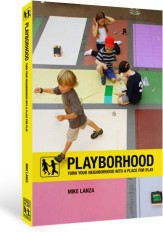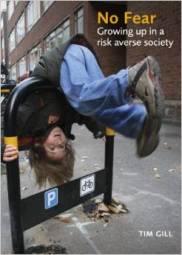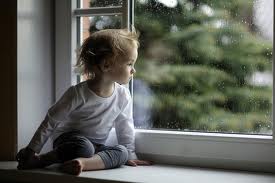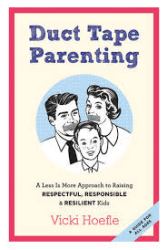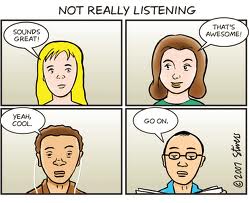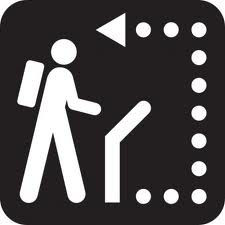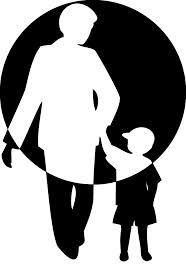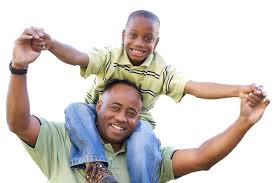 What is “active listening”? For therapists it’s the core, the meat and potatoes of therapy. Any therapist/counselor who does not actively (!) utilize this mindful, empathic, attachment based form of interpersonal engagement as the foundation and structure of his/her practice, as for as I’m concerned, is guilty of malpractice.
What is “active listening”? For therapists it’s the core, the meat and potatoes of therapy. Any therapist/counselor who does not actively (!) utilize this mindful, empathic, attachment based form of interpersonal engagement as the foundation and structure of his/her practice, as for as I’m concerned, is guilty of malpractice.
The good news is that active listening is relatively simple to understand, and easy to do on a basic level. It is, without exaggeration, the single most important change a person can make to improve relationships of any kind – marital, parental, filial, negotiative, in the workplace….the only kinds of situations inappropriate for active listening would be an imminent threat to safety, or if the person(s) were completely non-responsive or openly aggressive and hostile. Even in the face of non-threatening hostility, however, active listening can – and will – create levels of communication and openness to change previously unimaginable. It is, in short, the key to understanding, and change, in relationships.
So, again – what is this “active listening” I keep blabbering about? First, let’s look 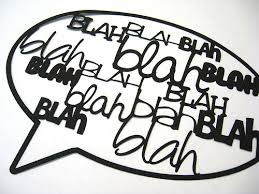 at what it is not. Active listening is not:
at what it is not. Active listening is not:
- Just waiting for your turn, so you can talk all about your own amazing self (!)
- Trying to control or dominate someone, or “win” a conversation
- Being completely quiet and passive
- Mindlessly agreeing with whatever someone says
- Looking as though you’re listening (in order to be liked, or not offend…)
- Invalidating what you’ve heard, putting the other person down, or using what you’ve heard as a weapon (as in a fight, or to build yourself up)
 And so on. Active listening is:
And so on. Active listening is:
- Understanding someone
- Learning something new and/or interesting about someone
- Enjoying the other person’s company
- Giving help and assistance
Okay, you say. Sounds good. Now how do I do it? Well, like many folks in my field, I’ve developed easy to remember heuristics (i.e., shorthand) for what can be complex processes. For active listening, in my world it’s three easy steps:
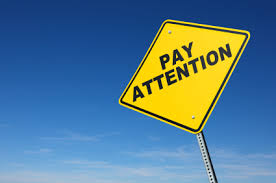 Easy, right? Let’s look at this more closely. First, in order to truly listen we have to “attend” to the person – their words, their tone of voice, their body language; everything. This means giving focused attention to, and being open and accepting of whatever the other says. And no, acceptance does not mean agreement – acceptance means allowing yourself to be open to a person as they are, at that moment in time. Sounds kind of squishy and new agey, right? Not really. Let’s break it down a little more. First and foremost, in active listening, be quiet and listen (“attend”). How do you do this?
Easy, right? Let’s look at this more closely. First, in order to truly listen we have to “attend” to the person – their words, their tone of voice, their body language; everything. This means giving focused attention to, and being open and accepting of whatever the other says. And no, acceptance does not mean agreement – acceptance means allowing yourself to be open to a person as they are, at that moment in time. Sounds kind of squishy and new agey, right? Not really. Let’s break it down a little more. First and foremost, in active listening, be quiet and listen (“attend”). How do you do this?
- Give the person your full attention
- Make good eye contact, but don’t stare. Try to be on the same eye level – sitting, standing, etc.
- Use encouragers like “uh huh,” “okay,” “no kidding!” “hmm,” “yeah” to keep the conversation going (these also amount to “mini validations”)
- Let the other person lead the conversation – it’s their show, not yours
- Listen carefully for feelings, thoughts, and ideas
- Ask open ended questions that invite conversation, such as “What classes did you have today?” “So, what’s going on with Ellen?” “Tell me about that”
- Do not ever, under any circumstances, lecture, preach, scold, instruct, opinionate, or bloviate in any way. Keep your focus on paying close attention to what the other person is saying.
So, that’s “attend.” Okay, clear enough. What about “reflect,”you ask. You  didn’t? Too bad, I’m gonna go there anyways. The second step in active listening is to “reflect” back to the person what you heard them say. This lets him/her know – without a doubt – that you’re listening, and listening closely. As a therapist, I cannot emphasize enough how important it is for a person to feel as though s/he is being heard. When you reflect honestly and openly, you are sending the clear message that: “You (and what you’re saying) are important. You matter. Your thoughts, feelings, and ideas are valuable and worth listening to.”
didn’t? Too bad, I’m gonna go there anyways. The second step in active listening is to “reflect” back to the person what you heard them say. This lets him/her know – without a doubt – that you’re listening, and listening closely. As a therapist, I cannot emphasize enough how important it is for a person to feel as though s/he is being heard. When you reflect honestly and openly, you are sending the clear message that: “You (and what you’re saying) are important. You matter. Your thoughts, feelings, and ideas are valuable and worth listening to.”
So – once again – how do you do this? Well….
- State in your own words what you heard the person say
- Do not “parrot” – repeat back what you heard, but use your own words
- Keep it short and sweet – “You were tired.” “So you had a good day!” “Sounds frustrating.” “He said you were promoted?” Etc, etc….
- For more important issues, add some emphasis: “What I hear you saying is…” “So basically how you felt was…” “Let me see if I got this right…”
- If you get corrected, roll with it – it’s the other person’s reality, not yours
- Focus especially on feelings, as well as thoughts and ideas
- Do not offer your opinion, try to correct, refute, disagree, or insert your own self into the conversation. That’s not listening, active or otherwise.
Okay, “reflect.” Got it. Now, how about this “clarify”? So now you’ve mastered the art of “attending,” and you’re a whiz at “reflecting.” In the third step of active listening, “clarify,” you’re essentially just asking for more information in order to get a clearer picture of the situation. More importantly, however, you’re strengthening the sense of your (genuine) interest in the person, as well as possibly learning something that might deepen your understanding of who s/he really is, what makes him/her “tick”, possibly gaining deeper insight into his/her thoughts, feelings, motivations….when you “clarify,” you can go as deep as you want or need. Let the situation and the person’s response be your guide.

So how do you “clarify”? You ask open ended questions, based on what you’ve heard:
- “So who was with you?”
- “How long have you felt like this?”
- “Where were you when this happened?”
- “Is there something you’re not telling me?”
- “Hold on – what exactly did she say?”
- A classic, especially for reluctant teenagers and children: “Anything else?” Repeat as often as necessary.
- And as always, never, ever insert your own damn self into the conversation. Keep your thoughts, ideas, and opinions under wraps – for now.
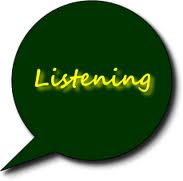
So that’s it – that’s “active listening” in a (kind of large) nutshell – “attend,” “reflect,” and “clarify.” As with new skills of any kind, the secret of course is practice, practice, practice. In particular, practicing active listening with children, especially teens, will show real, observable results. I have seen parent/teen relationships transformed by this one strategy. It’s that good.
Once you’ve mastered the “attend,” “reflect,” and “clarify” core of active listening, you will have a lifetime skill appropriate for most situations. Most of the time, these three steps will be enough. Occasionally, however, situations will arise that require thoughtful feedback – you might see a need to share what you think, feel, or perceive about the person’s situation. In these cases:
- Be honest and supportive – honest and respectful feedback and/or criticism might sting at first, but be better than silence in the long run
- Be brief. Say in a word what you could say in a sermon.
- Remember the “ten word rule” – anything over ten words yields diminishing returns. (KISS – Keep It Simple and Short)
- Use “I” statements. Do not start with “you.” For example: “I feel like you might be making a mistake.” “It seems to me that what might be going on here is…” “From my perspective, it seems like…”
- Check with the person – “What do you think?” “Does that make sense?”
- Listen to his/her response.
- Do not lecture, preach, scold, instruct, opinionate, try to correct, refute, disagree, or insert your own self into the conversation.
That’s it! You now have the tools to connect on a fundamental level with anyone you choose, anytime, anywhere. Use your powers wisely, and remember:
“Wisdom is the reward you get for a lifetime of listening when you’d have preferred to talk.” Doug Larson

 “In the presence of a sensitive and responsive caregiver, the infant will use the caregiver as a “safe base” from which to explore. It should be recognized that ‘even sensitive caregivers get it right only about 50 percent of the time. Their communications are either out of synch, or mismatched. There are times when parents feel tired or distracted. The telephone rings or there is breakfast to prepare. In other words, attuned interactions rupture quite frequently. But the hallmark of a sensitive caregiver is that the ruptures are managed and repaired.‘” (emphasis mine)
“In the presence of a sensitive and responsive caregiver, the infant will use the caregiver as a “safe base” from which to explore. It should be recognized that ‘even sensitive caregivers get it right only about 50 percent of the time. Their communications are either out of synch, or mismatched. There are times when parents feel tired or distracted. The telephone rings or there is breakfast to prepare. In other words, attuned interactions rupture quite frequently. But the hallmark of a sensitive caregiver is that the ruptures are managed and repaired.‘” (emphasis mine) the skyrocketing rates of childhood anxiety. Which keeps me busy, but all things being equal wouldn’t it be nice if everyone relaxed, just a little, and allowed ourselves to be “good enough”? Children are remarkably resilient and flexible, and will thrive if provided the basic attachment needs described above. And no, this isn’t a prescription for scheduling “quality time,” or scheduling anything. It’s about love, and connection, and attachment which in the end will out over academics, salary, or any other materialistic, external marker of ‘success.’ Plus you want your kids to take care of you when you’re old and feeble, right? So lay that foundation now. Seriously, what children need more than anything – anything – is a “good enough” parent.
the skyrocketing rates of childhood anxiety. Which keeps me busy, but all things being equal wouldn’t it be nice if everyone relaxed, just a little, and allowed ourselves to be “good enough”? Children are remarkably resilient and flexible, and will thrive if provided the basic attachment needs described above. And no, this isn’t a prescription for scheduling “quality time,” or scheduling anything. It’s about love, and connection, and attachment which in the end will out over academics, salary, or any other materialistic, external marker of ‘success.’ Plus you want your kids to take care of you when you’re old and feeble, right? So lay that foundation now. Seriously, what children need more than anything – anything – is a “good enough” parent.

